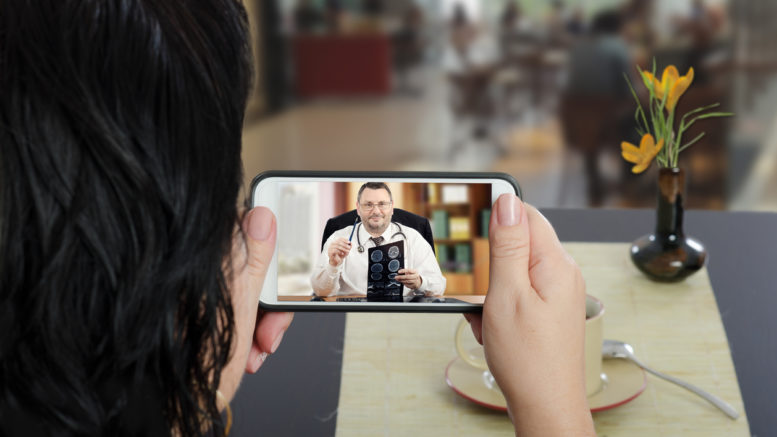Healthcare today is rapidly transitioning from transactional to meaningful customer interactions. It’s because consumer expectations relating to health and well-being are inclining towards offers that serve their needs. For instance, according to a survey, more than 70% of users were most likely to choose a provider that offered follow-up care using text or an email. Another survey found that patients were interested in using a provider that could provide remote or telehealth services.
Quite evidently, virtual care is becoming one of the most appealing ways to engage with patients amidst the pandemic scare. In fact, consumers choose medical providers that can provide digital offerings that are easy to access for various needs. It could include routine therapy, mental health awareness, treatment screenings, and other wellness care needs.
But is that all? Keep reading, and you’ll find some fantastic facts about promising virtual health care trends and benefits of virtual clinical education.
How is Virtual Care Turning Out to be a Boon in Modern Times?
Who knew the use of digital devices could revolutionize the entire healthcare industry? The devices that were helpful to take care of our professional or personal lives are now enabling us with routine and sometimes even emergency care.
Technology-enabled solutions have certainly caused a ripple effect resulting in the birth of “telehealth services.” Thanks to this, doctors can monitor and diagnose patient issues with just a single click. Hence, it’s enhancing clinical care, education, and so on.
But how is it helping providers reach the masses during these unprecedented times when you need to adhere to the social distancing guidelines? Keep scrolling through and find out yourself.

Improving Patient Access and Engagement
The first and the foremost benefit of primary care providing virtual services is that even patients from distant locations can quickly get in touch with the care specialists. Telehealth or online patient portals are a few ways to connect urban providers with local communities to fill the healthcare gap quickly.
Providers are launching a wide array of applications to provide connected, coordinated care in rural or remote areas to improve care access. The good part is that patients are getting familiar with virtual healthcare options like video conferences, mobile apps, and web portals.
That’s driving organizations to upgrade their systems and look for innovations integrating the new technology options available for seamless user experience.
Other than that, it is helping in the following ways:
Reducing Medical Errors
To err is human. But a single error in diagnostics or treatment protocol can cost someone a life. The majority of medical errors result from using faulty systems and processes.
With this in mind, healthcare providers are readily changing their information architecture, focusing on what users want and need rather than focusing solely on their profits. For instance, there is a rise in the use of OneContact, which is a comprehensive digital solution that encompasses remote monitoring and communication tools for quality clinical reviews remotely while enhancing communication with patients. Hence, it is helping providers to save time since they don’t have to spend any time feeding data manually into the system for hours.
The patient provides you with the relevant information. Based on that, a doctor can devise or modify the treatment strategy suitable for quick patient recovery. Thus, patients are getting everything right in the comfort of their homes. The risk of exposure decreases, thereby increasing the patient satisfaction factor.
Improving Flexibility
Since this modern technology allows you to be virtually anywhere and at any time, you have a chance to offer extended hours or even weekend services. This is especially helping primary care providers to manage the higher workload because of increasing COVID patients. Not only that, the doctors who can not serve the patients due to virus infection are also using the same system to check their patients from time to time. And this is further resulting in better patient outcomes.
Enabling Better Patient Outcomes and Lower Readmissions
Not only does virtual health care help improve patient outcomes, it’s also helping the providers cut down on readmissions. Since patients are getting everything from a single video call or a phone call, the heightened anxiety about seeing the doctor everything they face a complication is decreasing.

Reducing Overall Healthcare Costs
When it comes to healthcare, cost-cuttings are not much of an option. However, with the changing digital landscapes, something that took years to complete is coming to the market within a few months. That eventually reduces the providers’ overall expenditure, which is lowering the healthcare costs for the end-users.
Suppose you are thinking about where the money goes when it comes to availing healthcare services. In that case, most of the money goes to hospital care, physician services, nursing care facilities, clinical services, and home health care. And with telemedicine in the picture, providers are clearly reducing their operational costs, which is further helping to reduce overall healthcare costs.
In The End- The COVID Pandemic Changed the healthcare Operations Entirely
Everyone thought that nothing could impact the healthcare industry. After all, everyone required care facilities. Isn’t it? Also, no one ever quoted healthcare and recession together since the demand for medical care was relatively constant across every scenario. However, the system lost its foothold with the arrival of COVID-19.
For starters, people started curtailing activities that require them to leave their homes. But the desire to avail care for the medical conditions that are at high risk of catching the virus is never lost. So, what happened? People started looking for alternatives that can help them avail all the services right at their location.
Thus, the pandemic is driving providers to optimize their supply chains to minimize disruptions. The healthcare industry needs to cover different aspects of technology such as data and other web-based business models to make the right impact. It’s more about being available for routine care and wellness services than just taking on patients who require emergency services.
So, are you providing the desired care to your patients, keeping in mind the pandemic protocols? If not, then it’s time to opt for modern technologies to streamline your case management and patient outcomes.
